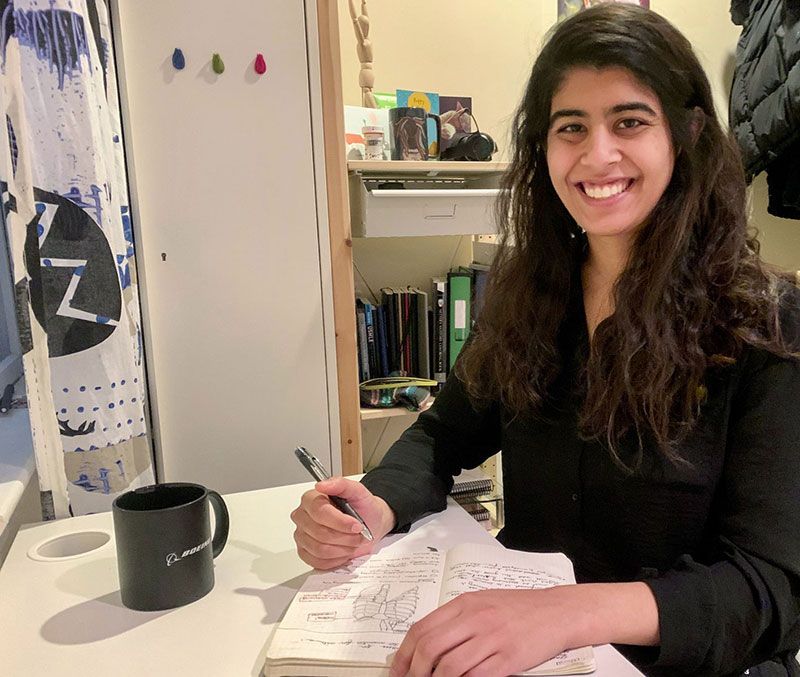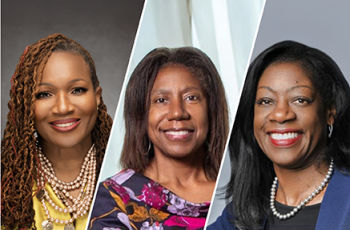
Abhya Vij, a second-year MD student at the George Washington University (GW) School of Medicine and Health Sciences (SMHS), is using her passion for innovation to create a wearable device that may one day help children in disadvantaged communities better understand asthma triggers.
Her inspiration stems from the SMHS asthma clinical public health summit, when she and three other MD students — Sajani Desai, Rachael Herrera, Rina Samant, and Sonia Samant — thought up the idea for Spiro, a bracelet that would help identify children’s asthma triggers to decrease morbidity and mortality. The students entered the idea in the GW New Venture Competition, winning a runner-up prize of $5,000 and the Fosun Health and Wellness Prize of $10,000.
After the competition, Vij continued the project on her own, tweaking it and pursuing creative ways to make it a more viable and successful tool to help others.
“When we first started the idea for Spiro, we wanted to create something that would provide information about what’s triggering a child’s asthma,” she said. “We thought a wearable would be a great solution.”
Ideas in the early stages included looking at air sensors that monitor dust and particulate matter and different gases and pollutants. Those sensors then would be arranged on a bracelet along with a GPS to pinpoint the location of the trigger. They also wanted to make sure it would be available to those who need it most, such as children in Wards 7 and 8, which have the highest rates of asthma-related ER visits, she said.
During the competition, the project evolved, Vij added.
“It was eye opening because none of us had a business background. After the first round we had to do a lot of write-ups and pitches and everyone in our audience was a business person. We had to really change the way that we were presenting this to help business-minded people see the value of it,” she said.
After the competition, Vij’s classmates chose to move on from the project to dedicate their time to other passions, but Vij continued, devoting her summer to working on it as part of the SMHS Clinical Practice Innovation and Entrepreneurship Track.
She started to change the device, exploring ways to pick up different allergens than just pollutants in the air, such as cockroach allergen and animal dander. She researched having air samples tested for triggers.
“I realized that this air sampling didn’t need to be a bracelet anymore because it doesn’t have the same sensors, and so instead it would require a small, air sampling cassette [with] a filter to catch particulates that you can look at under a microscope and also a collection medium that different proteins can stick to,” she explained.
Currently, however, air sampling devices are stationary and not made to be carried around. But, with some more research, Vij found tiny air pumps to draw in the air that could be set up along with the cassette.
She’s currently still tinkering with ideas for a prototype and using all her research and what she’s learned in class to expand on her innovation.
“I keep a notebook with me and I can throw in ideas that I come up with and when I have a free moment I look something up,” she said about managing the project alongside medical school. “It’s nice to have something going on that is not just school work, but then when I’m in class learning about different things, I can apply them to this.”
She also credits the continuation of the project to the support she has received from mentors like Lawrence “Bopper” Deyton, MD ’85, MSPH, senior associate dean for clinical public health, Murdock Head Professor of Medicine and Health Policy, and professor of medicine at SMHS; Stephen Teach, MD, MPH, chair of the Department of Pediatrics at Children’s National Hospital and professor of pediatrics and emergency medicine at SMHS; Ankoor Shaw, assistant professor of pediatrics at SMHS; and Karla Bartholomew, PhD, JD, MPH, PA, program and development officer for clinical public health and director of the dual-degree MD/MPH program.
“It is important to have a creative outlet, but moreover I think we are entering an era when progress hinges on interdisciplinary projects,” Vij added. “As a medical student and eventually a future physician, I want to keep doing my part in finding solutions that combine fields to help people.”


